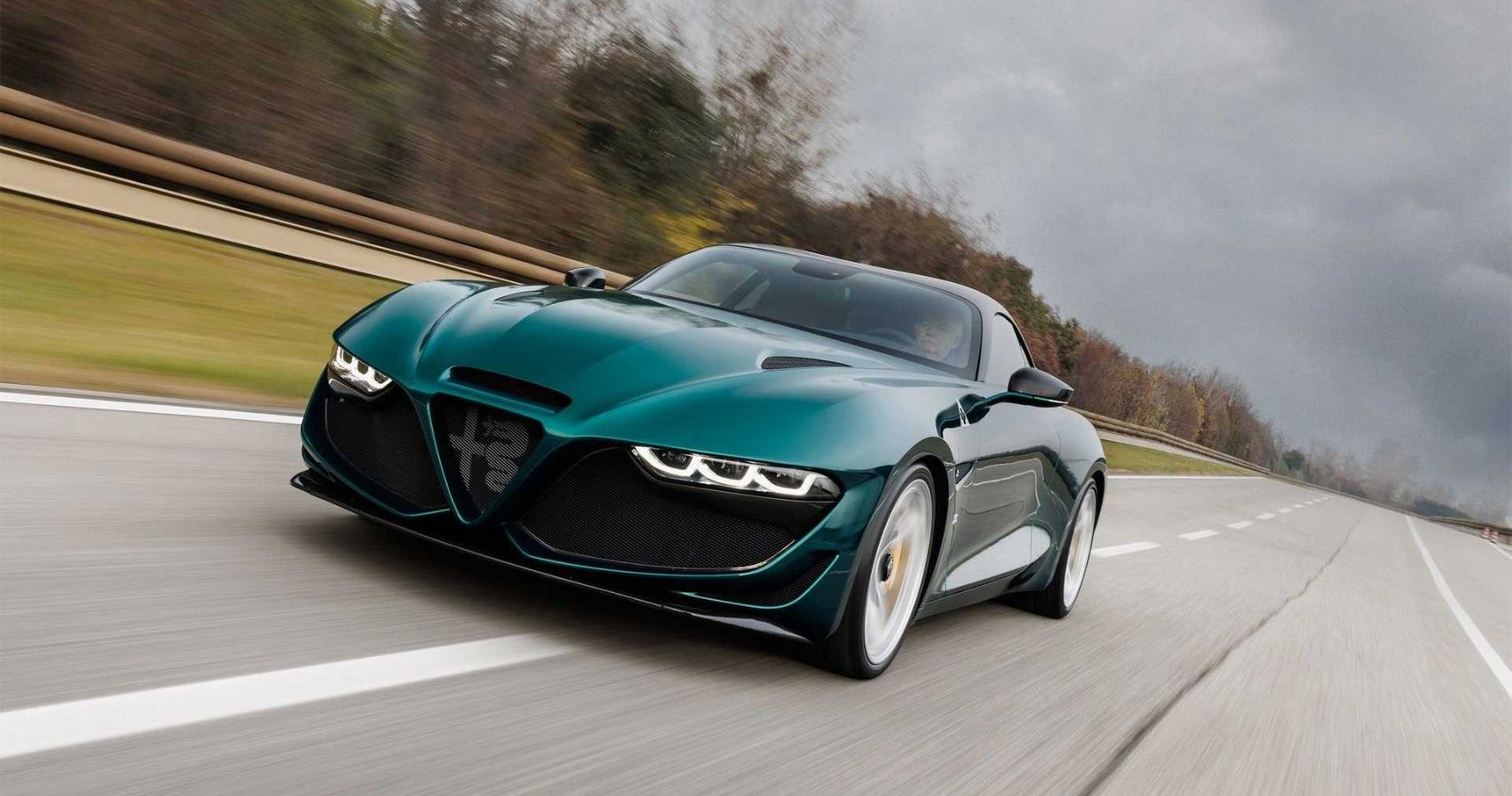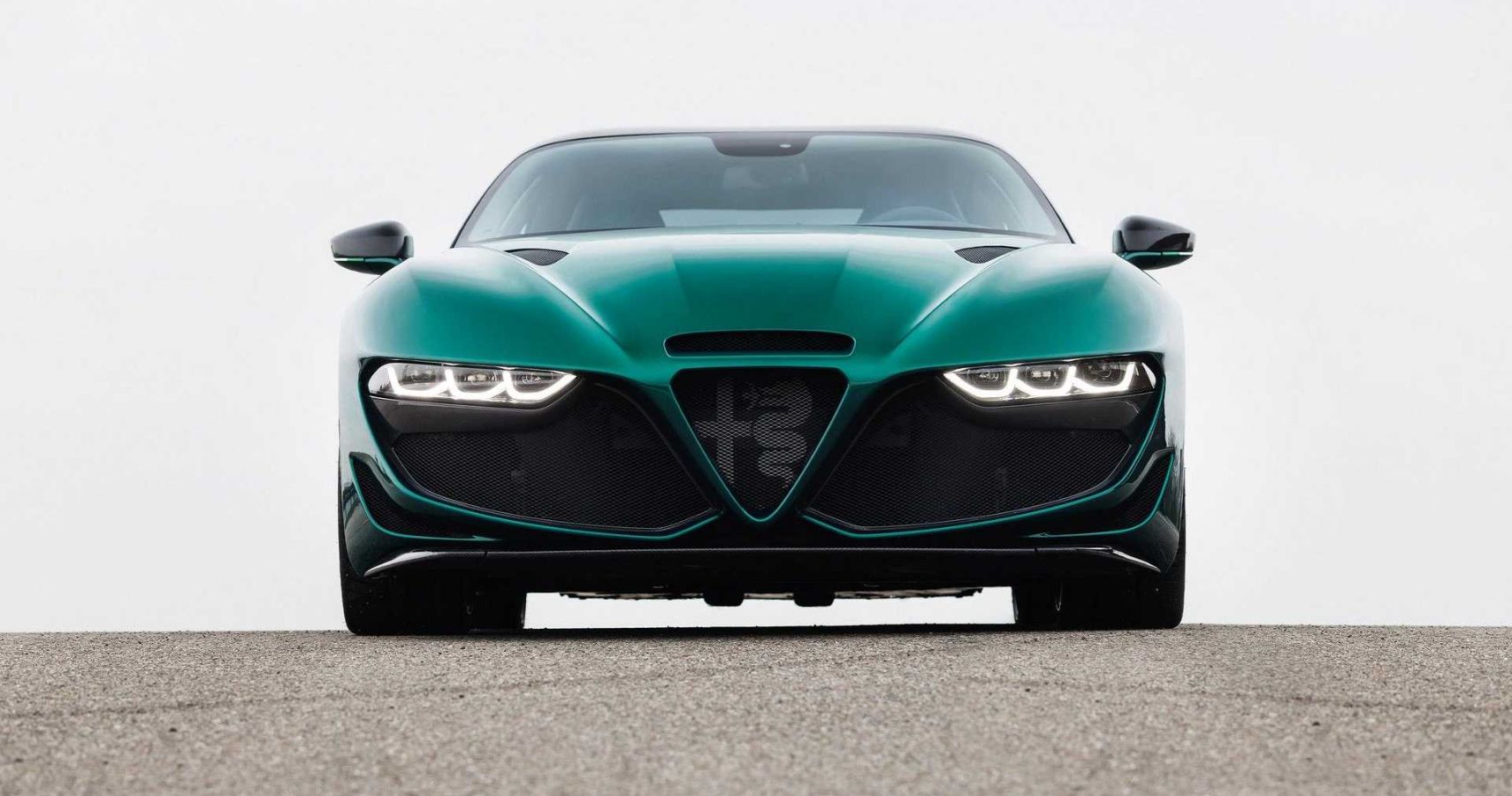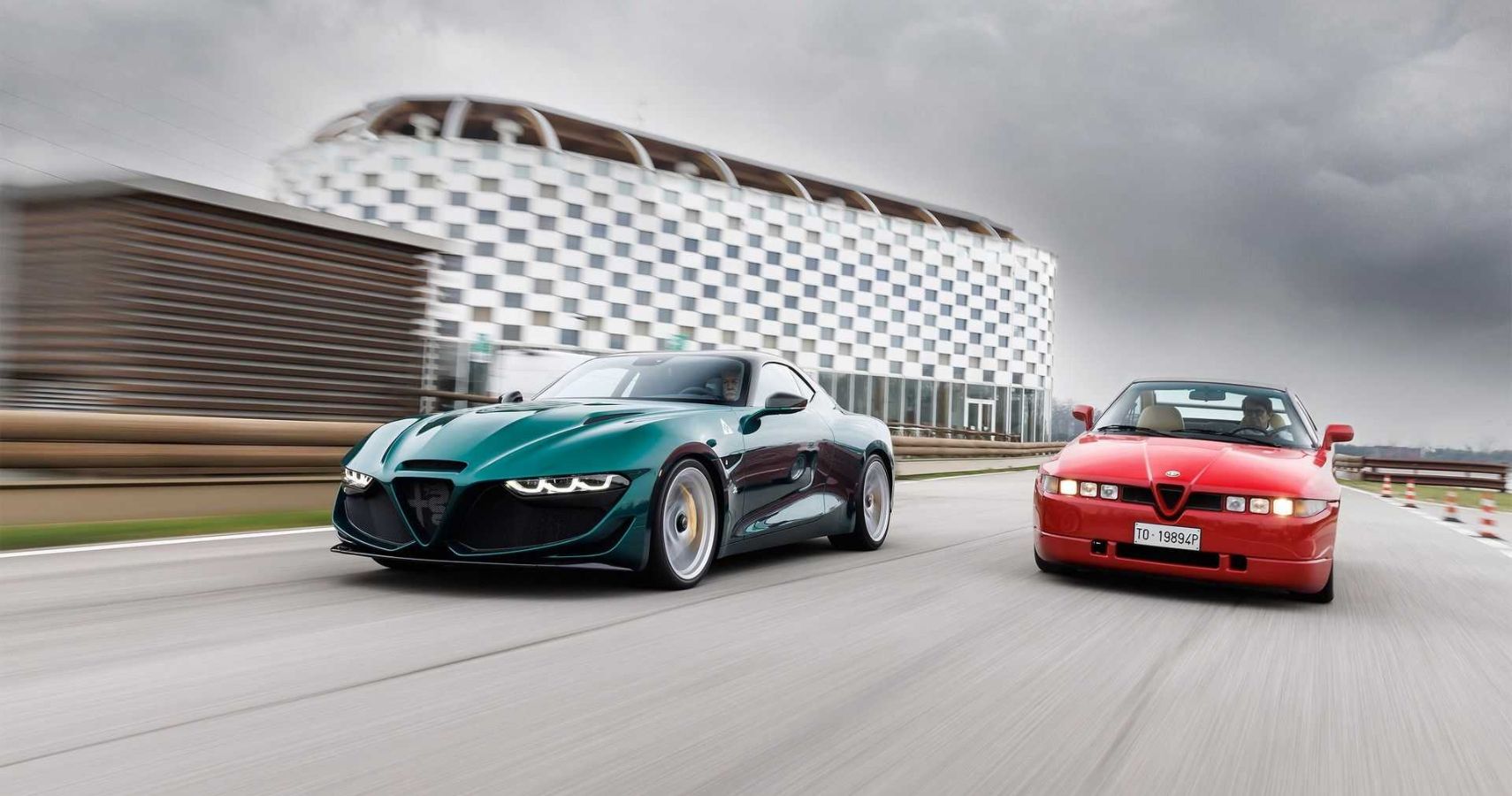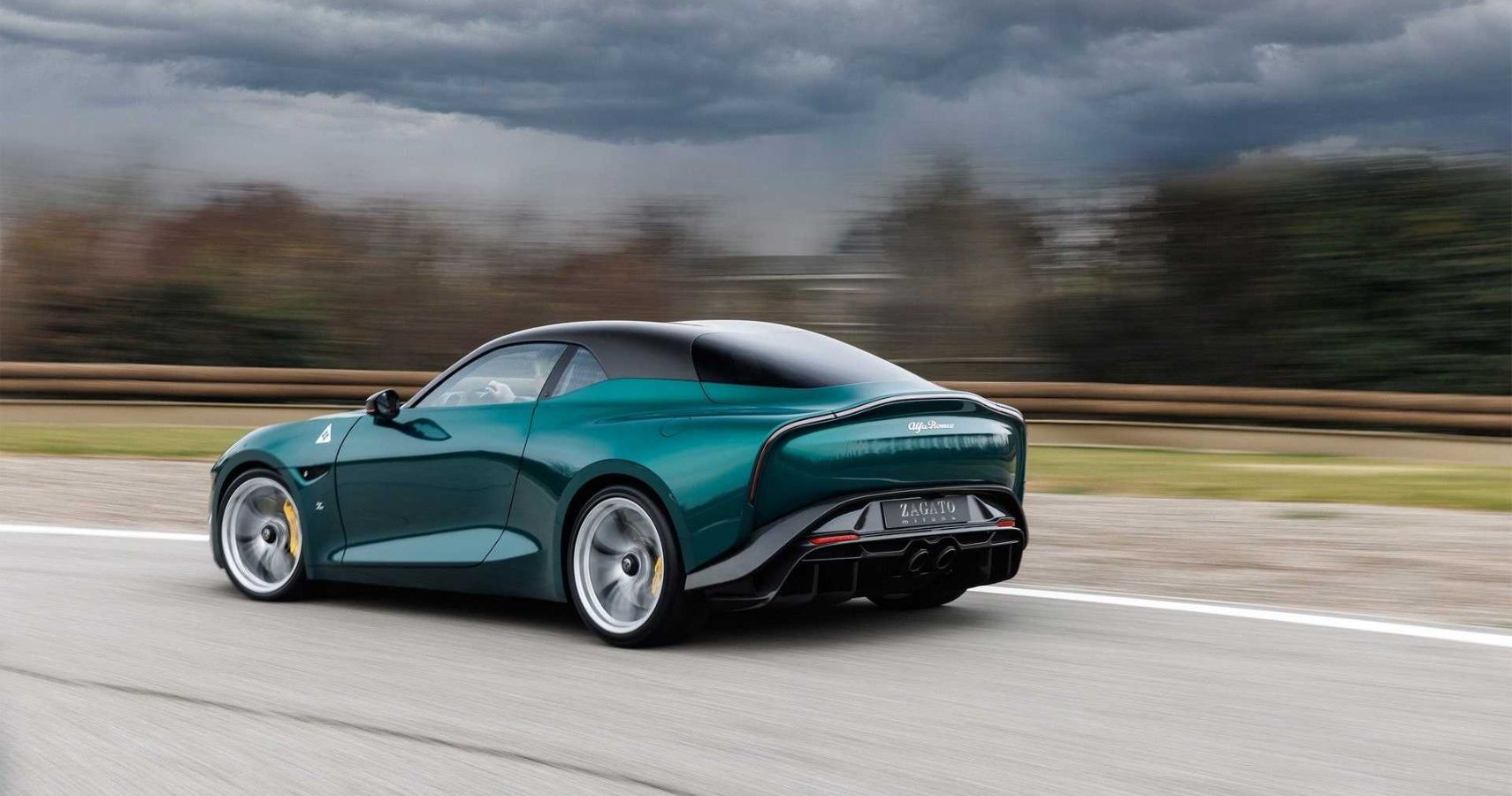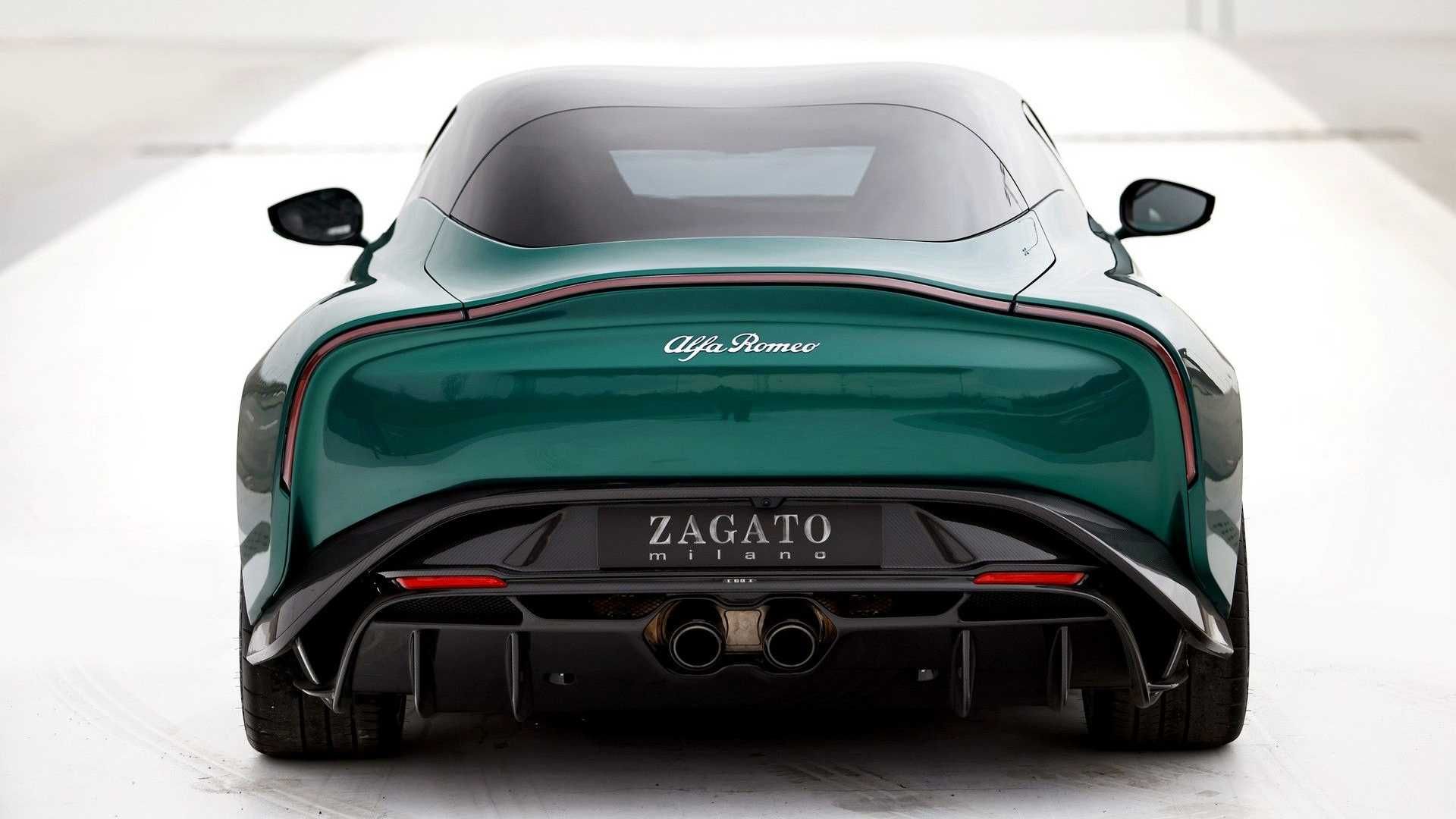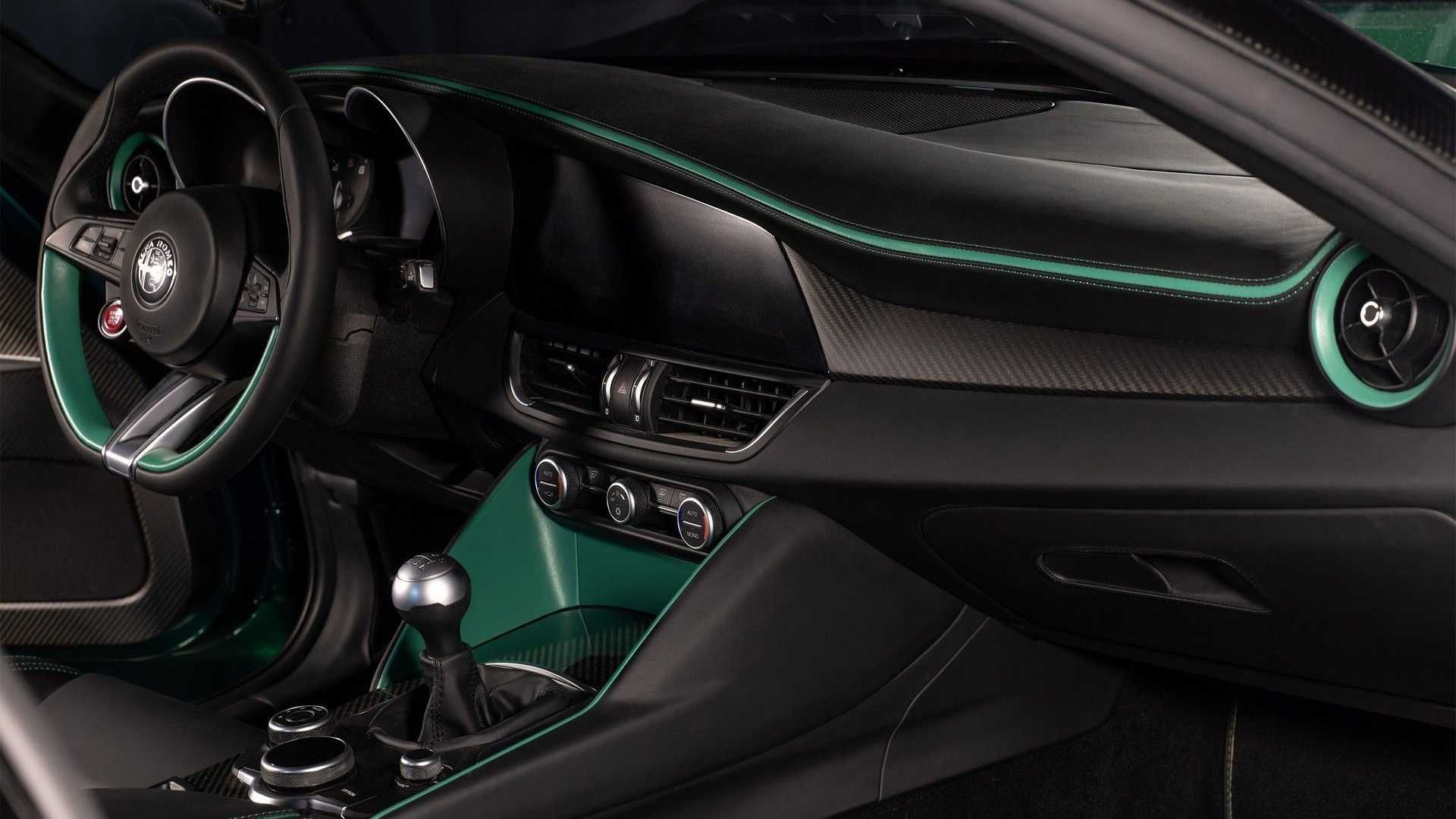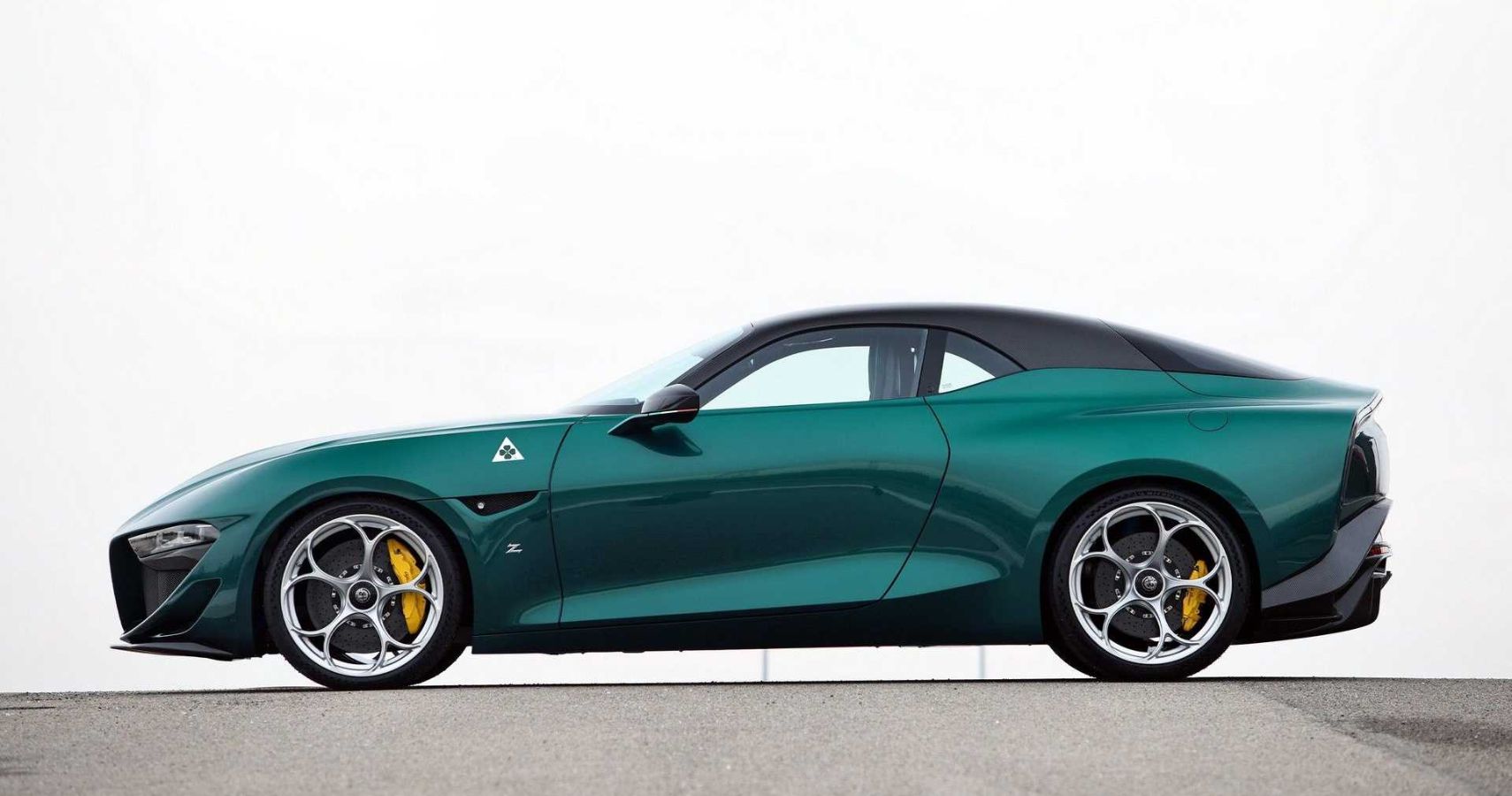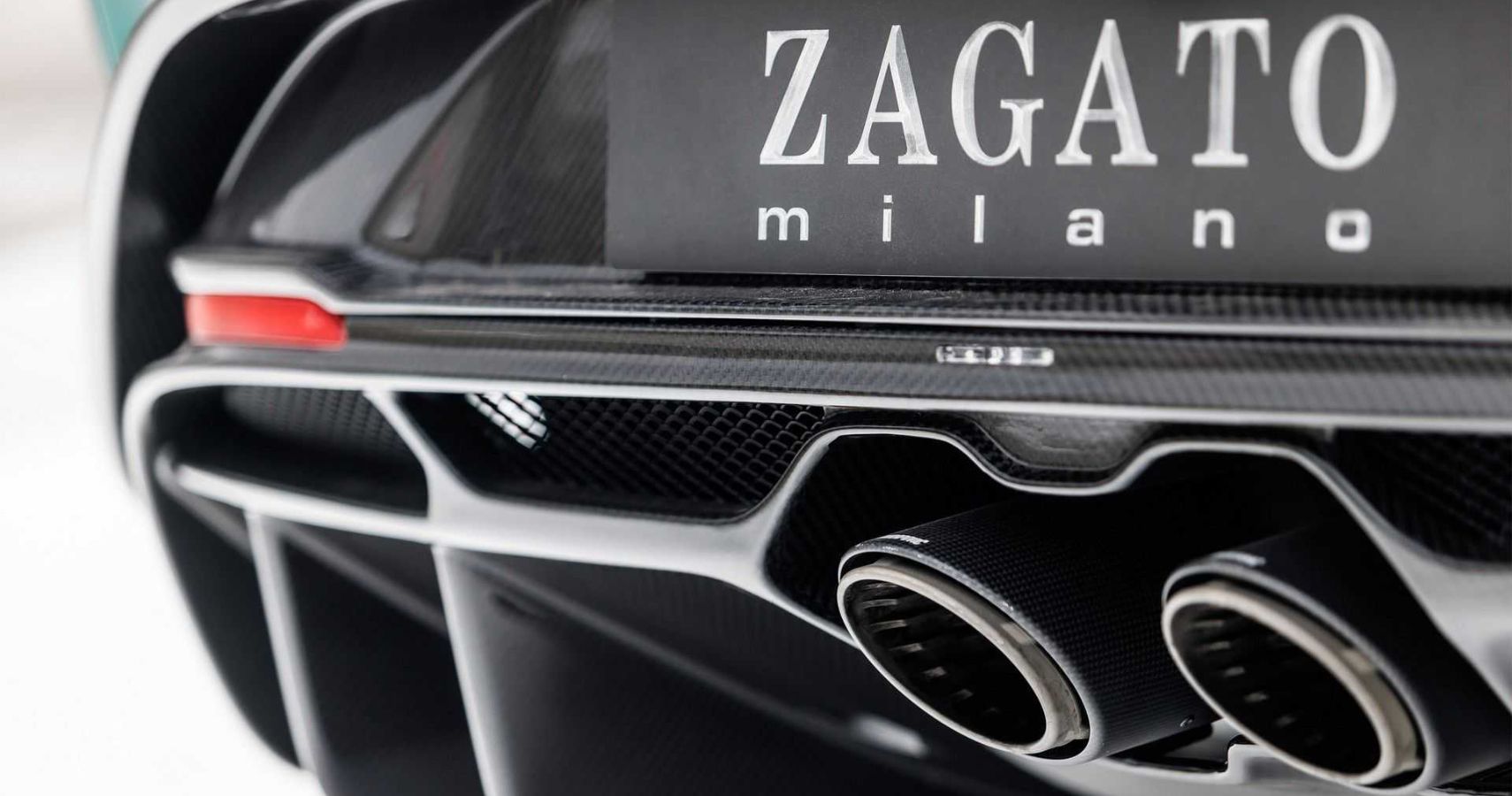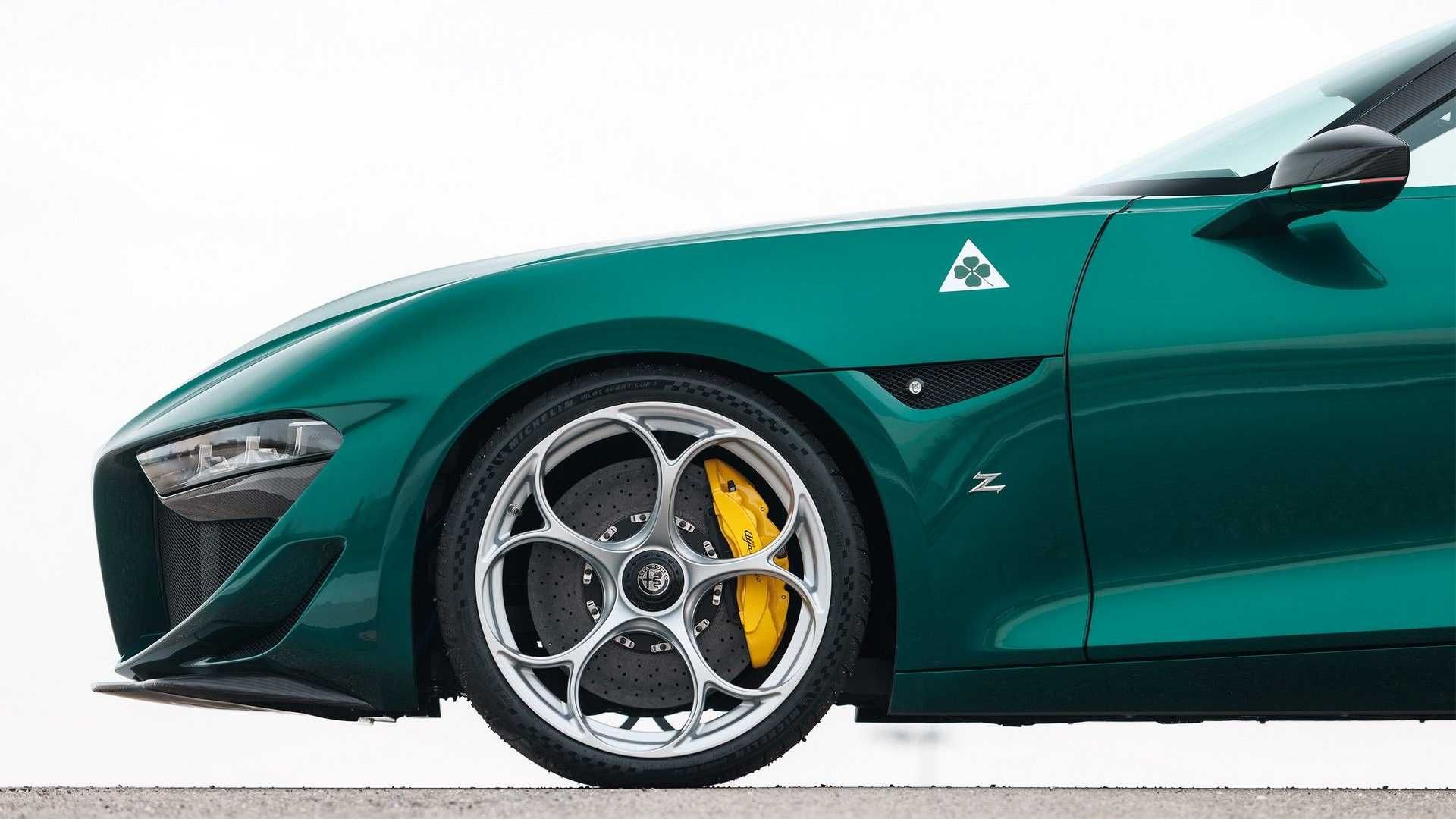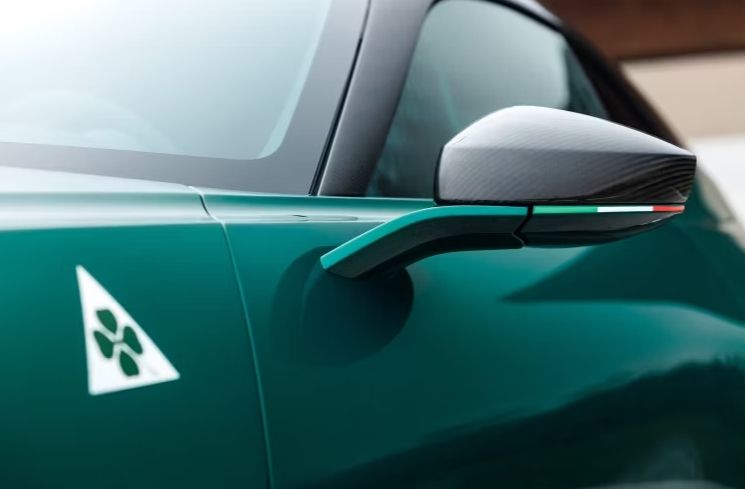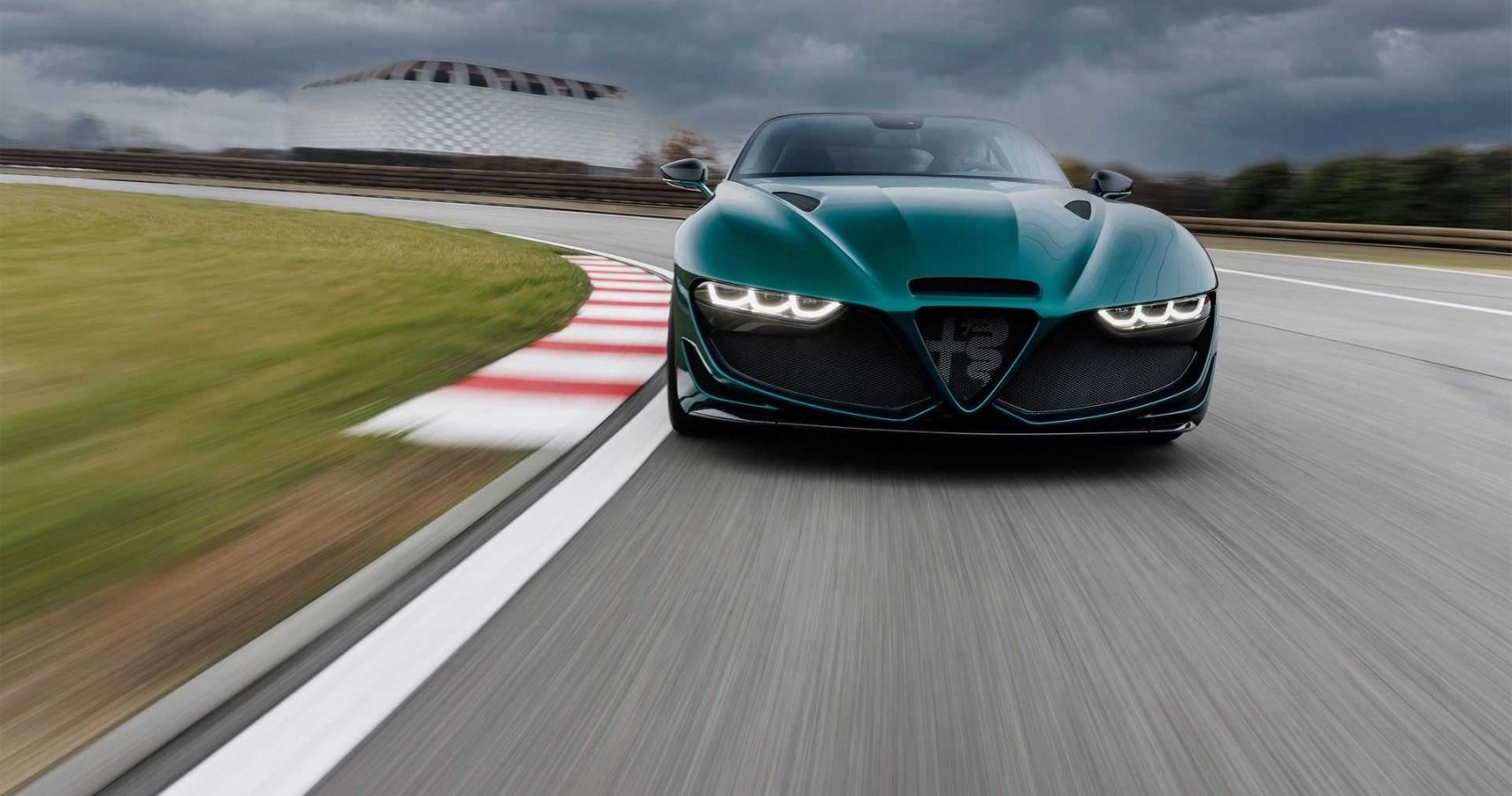Alfa Romeo and the renowned Italian design house and coach builder Zagato collaborated to create a special version of the Giulia.
Tagged the Alfa Romeo Giulia SWB Zagato, this sedan comes with many perks, such as a custom carbon-fiber body, a nicely detailed interior, and a potent powertrain. Unlike most cars in the Alfa Romeo and Zagato portfolio, this Giulia SWB Zagato is an exclusive "one-off" breed.
Created for a German collector, the Alfa Romeo Giulia SWB Zagato debuted ahead of schedule in December 2022, as a gift to everyone who cherishes automobile design. Limited to just one, this stunning Alfa Romeo Giulia SWB Zagato is an excellent example of the craftsmanship of one of Italy's top coach builders. We've compiled a list of ten reasons why you should adore and appreciate the new Alfa Romeo Giulia SWB Zagato.
10 Exceptional Design Takes Inspiration From Alfa Romeo's Giulietta SZ and Giulia TZ
Based on the highly regarded Giulia Quadrifoglio performance variant, the new Zagato has a shorter wheelbase – thus the SWB in the name. The car's front end takes inspiration from the 1950s Giulietta SZ, and the rear end's design comes from 1960s Giulia TZ.
The front carries a new version of Alfa's 3+3 headlamp signature. Sitting on either side of the low-positioned grille, these headlamps look stylish. Another distinguishing feature is the tail, which has a squared-off end.
9 Built For An Alfaholic And Collector
The particular client is an avid supporter of both Alfaholics and Aston Martin's continued collaboration with Zagato. In his collection is an Alfa Romeo SZ ('Sprint Zagato').
This is a car that epitomized the 1990s and turned an Alfa 75 sedan into a dashing, compact pocket supercar.
8 The SWB Zagato Pays Homage To Alfa Romeo And Zagato’s 100th Year Of Partnership
The brands developed the Giulia SWB in 2021, the year Alfa Romeo and Zagato celebrated their century-long partnership.
During this time, the brands envisioned a commemorative vehicle that would draw inspiration from the contemporary Giulia and Stelvio models from Alfa Romeo but take the form of a two-door coupé, which is regrettably lacking from the current Alfa Romeo lineup.
7 It Has A Sweet-Looking Canopy
When you first see the roof, you could wonder about the type of design strategy used. What you see there is the SWB's distinctive "double bubble" canopy and forward-leaning attitude.
Both of these are hallmarks of Zagato design, which take inspiration from the need for space for drivers to wear crash helmets in early closed racing cars.
6 The Alfa Romeo Giulia SWB Zagato’s Interior Also Combines Design Cues From Both Brands
The cabin features a cool-looking design, featuring leather-padded seats and a neatly designed dashboard.
Features that stand out the most inside the vehicle are the Sparco sports seats, which feature the Zagato logo on the headrest, and the green accents that are visible on the armrests and the center console, providing a special color contrast.
5 The SWB Zagato Is An Exclusive Coupe
Zagato and Alfa Romeo have not announced how much the customer paid for the car, so we’re a little in the dark about that.
But, given the “custom-built” and one-of-a-kind status, it is likely to cost millions rather than hundreds of thousands of dollars.
4 The One-Off Zagato Is A Promising Beast On The Road
The vehicle was originally a Giulia Quadrifoglio for the European market, with a six-speed manual transmission. However, Zagato modified the car to meet the requirements of the limited-edition GTAm.
This, for the collector, translates to a power bump on its 2.9-liter twin-turbocharged V6 from 502 horsepower to 540 horsepower, as well as GTAm-only features like carbon-ceramic brakes, dual center exhausts, and 20-inch center-locking wheels. We envy the collector.
3 The Alfa Romeo Giulia SWB Zagato’s Design Got Approved By Alejandro Mesonero-Romanos
According to Zagato, Alejandro Mesonero-Romanos, the head of design at Alfa Romeo, along with his team, approved the design of the Giulia SWB Zagato. And that really says a lot.
Alejandro Mesonero-Romanos is the designer behind the Renault Samsung SM5 Mk3, the SEAT León Mk3, and the SEAT Ateca, to name a few. And thanks to his work on the SEAT 20V20, Mesonero won 2015’s Best Concept Car of the Year at the German Design Council Automotive Brand Contest.
2 The Alfa Romeo Giulia SWB Zagato Pays Homage To Alfa Romeo’s Golden Ages
This Alfa Romeo Giulia SWB Zagato serves as both a reminder of the companies' potential, and a throwback to the collaborations of the 1950s, 1960s, and 1970s.
That was the period of coach building when Italian design studios worked on enhancing their designs, which led to some of the most eye-catching sports cars.
1 The Alfa Romeo Giulia SWB Zagato Is One Of Many Special Homage Products From The Collaboration
As we stated earlier, the brands conceived the SWB Zagato to celebrate their 100th anniversary in business. But this isn’t the first milestone that the two businesses have jointly celebrated.
In 2010, Zagato created two versions of the iconic Giulia TZ, both to commemorate Alfa Romeo's 100th birthday.
The first edition was the track-only TZ3 Corsa. Based on a race car conceived by an unpopular Belgian company, the TZ3 Corsa also came as a one-off model.
The second model of that era was the TZ3 Stradale. Unlike the TZ3 Corsa, Zagato based the TZ3 Stradale on the American Dodge Viper. This second model was only available in 9 units.

